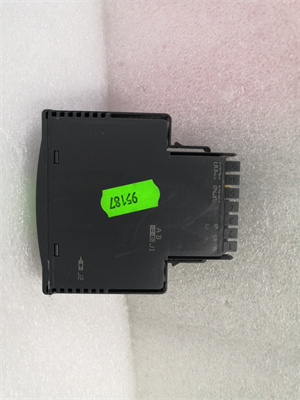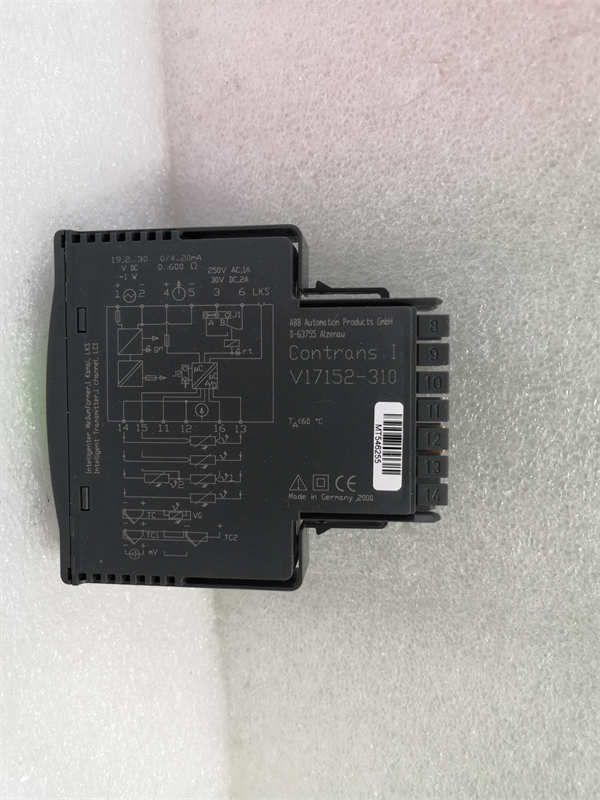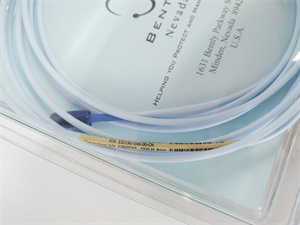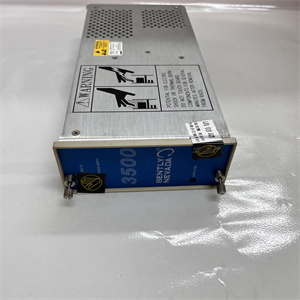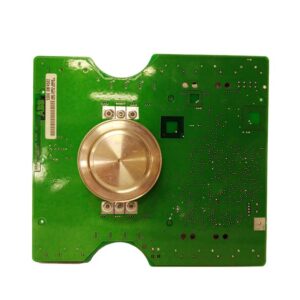Description
Detailed Parameter Table
| Parameter Name | Parameter Value |
| Product Model | ABB V17152-310 |
| Manufacturer | ABB |
| Product Category | Industrial Safety Relay |
| Contact Configuration | 2 NO (Normally Open) / 2 NC (Normally Closed) |
| Rated Voltage | 24V DC / 230V AC |
| Switching Current | 6A @ 230V AC / 8A @ 24V DC |
| Safety Standards | EN 60947-5-1, SIL 3 (IEC 61508) |
| Operating Temperature | -25°C to +55°C |
| Protection Rating | IP20 (DIN rail mounting) |
| Mechanical Life | 10 million operations |
| Electrical Life | 100,000 operations (rated load) |
| Connection Type | Screw terminals |
| Certifications | CE, UL, cUL, TÜV certified |
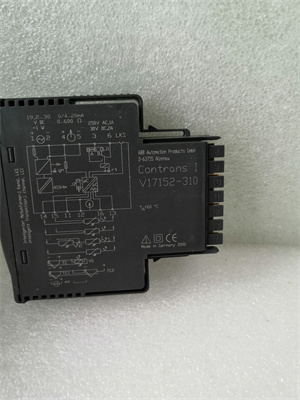
ABB V17152-310
Product Introduction
The ABB V17152-310 is a high-performance safety relay designed for critical industrial automation applications requiring fail-safe operation. Part of ABB’s trusted safety relay series, the ABB V17152-310 ensures reliable switching in emergency stop circuits, safety gates, and machine guarding systems.
With SIL 3 certification (IEC 61508), the ABB V17152-310 meets stringent safety requirements for industrial machinery, ensuring protection against electrical faults and unexpected machine restarts. Its robust design and high switching capacity (6A @ 230V AC) make it ideal for controlling contactors, valves, and other safety-critical loads.
Core Advantages and Technical Highlights
- High Safety Compliance:
Certified for SIL 3 (IEC 61508) and compliant with EN 60947-5-1, ensuring reliable operation in safety-critical applications.
Forced-guided contacts prevent unsafe conditions by ensuring contacts open/close simultaneously.
- Robust & Long-Lasting Performance:
10 million mechanical operations and 100,000 electrical operations at full load, minimizing maintenance needs.
Wide operating temperature range (-25°C to +55°C) for harsh industrial environments.
- Flexible & Easy Integration:
2 NO + 2 NC contacts for versatile wiring in safety circuits.
Screw terminal connections ensure secure and vibration-resistant wiring.
- Fail-Safe Design:
Self-monitoring function detects faults in relay operation, ensuring system safety.
Manual reset option prevents automatic restart after an emergency stop.
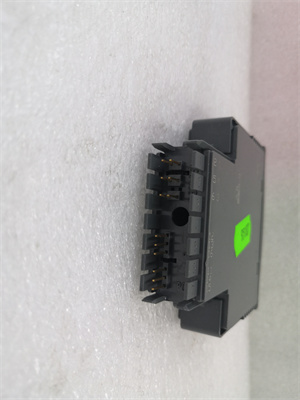
ABB V17152-310
Typical Application Scenarios
The ABB V17152-310 is widely used in:
Machine Safety Systems: Emergency stop circuits, light curtains, and safety interlocks.
Automated Production Lines: Safety monitoring for robotic cells and conveyor systems.
Packaging & Material Handling: Guard door monitoring and fault detection.
Energy & Process Industries: Safety shutdown systems for pumps and valves.
Automotive Manufacturing: Press and welding machine safety controls.
In these applications, the ABB V17152-310 ensures compliance with safety regulations while providing reliable switching performance.
Related Model Recommendations
ABB V17152-320 – Expanded safety relay with additional contacts.
ABB V19158 – Modular safety relay for complex safety circuits.
ABB 1SVR730850R3300 – Miniature safety relay for space-constrained panels.
ABB MS116 – Safety monitoring relay for light curtains and E-stops.
ABB XPSMC – Programmable safety controller for advanced safety logic.
Installation, Commissioning & Maintenance Instructions
Installation Preparation:
Mount the ABB V17152-310 on a DIN rail in a clean, dry control cabinet.
Ensure proper 24V DC or 230V AC supply and verify wiring before power-up.
Follow safety circuit design standards (ISO 13849-1/2) for correct integration.
Maintenance Suggestions:
Check contact resistance periodically to ensure proper switching.
Inspect wiring connections for tightness and corrosion.
Test safety function regularly to confirm fail-safe operation.
Service & Guarantee Commitment
ABB provides a 24-month warranty for the ABB V17152-310, covering manufacturing defects. Technical support is available through ABB’s global service network, including:
On-site commissioning assistance
Safety circuit design consulting
Firmware & documentation updates
For extended reliability, ABB offers preventive maintenance programs and safety system audits to ensure long-term performance.

